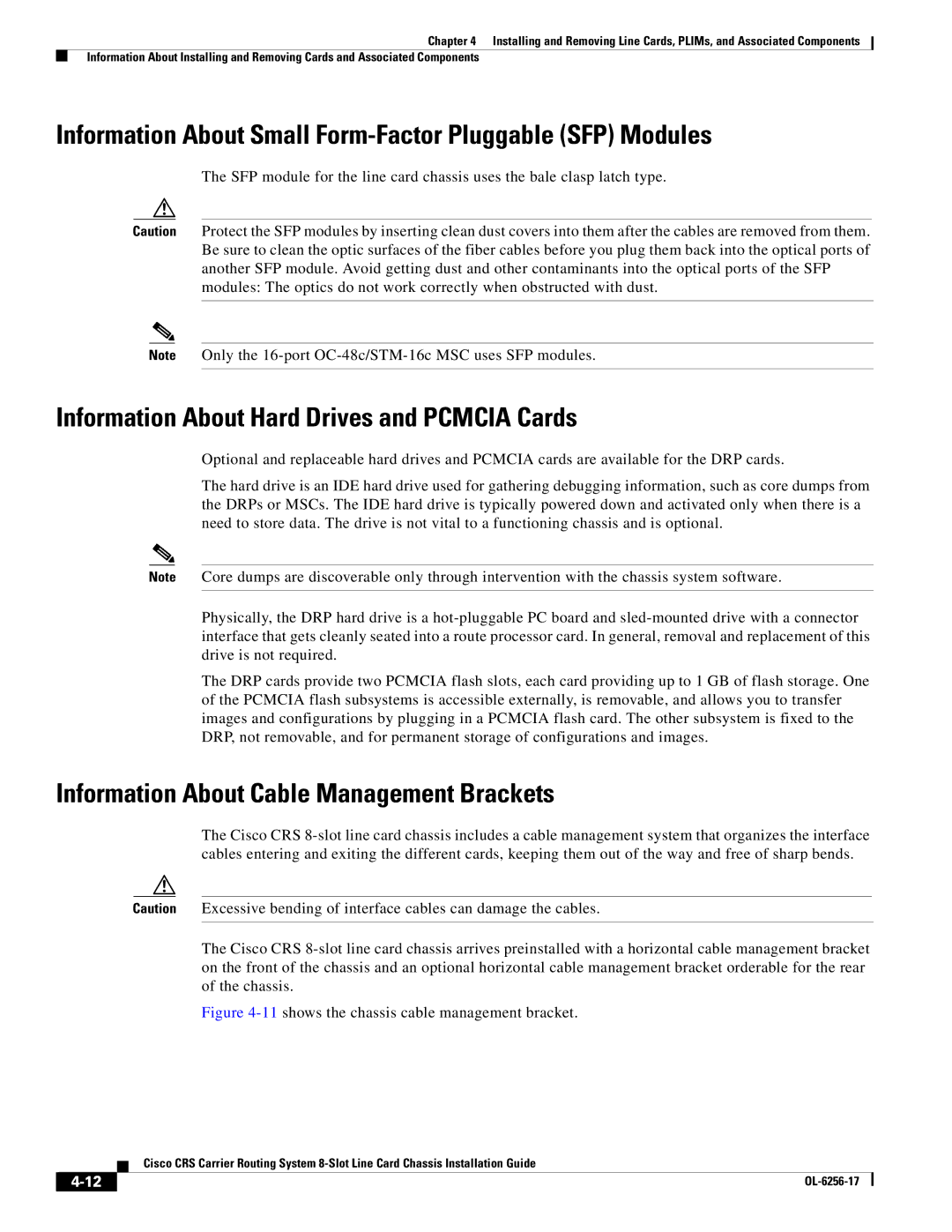
Chapter 4 Installing and Removing Line Cards, PLIMs, and Associated Components
Information About Installing and Removing Cards and Associated Components
Information About Small Form-Factor Pluggable (SFP) Modules
The SFP module for the line card chassis uses the bale clasp latch type.
Caution Protect the SFP modules by inserting clean dust covers into them after the cables are removed from them. Be sure to clean the optic surfaces of the fiber cables before you plug them back into the optical ports of another SFP module. Avoid getting dust and other contaminants into the optical ports of the SFP modules: The optics do not work correctly when obstructed with dust.
Note Only the
Information About Hard Drives and PCMCIA Cards
Optional and replaceable hard drives and PCMCIA cards are available for the DRP cards.
The hard drive is an IDE hard drive used for gathering debugging information, such as core dumps from the DRPs or MSCs. The IDE hard drive is typically powered down and activated only when there is a need to store data. The drive is not vital to a functioning chassis and is optional.
Note Core dumps are discoverable only through intervention with the chassis system software.
Physically, the DRP hard drive is a
The DRP cards provide two PCMCIA flash slots, each card providing up to 1 GB of flash storage. One of the PCMCIA flash subsystems is accessible externally, is removable, and allows you to transfer images and configurations by plugging in a PCMCIA flash card. The other subsystem is fixed to the DRP, not removable, and for permanent storage of configurations and images.
Information About Cable Management Brackets
The Cisco CRS
Caution Excessive bending of interface cables can damage the cables.
The Cisco CRS
Figure 4-11 shows the chassis cable management bracket.
Cisco CRS Carrier Routing System
|
| |
|
